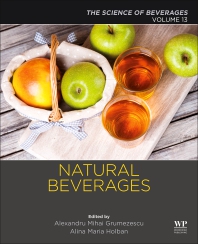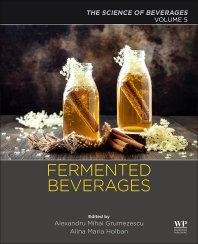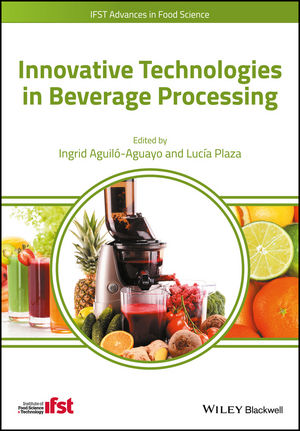Flavor innovation grows reach
It’s no surprise to flavor houses that traditional flavors remain the favorites of beverage companies introducing new products. Orange, grape, chocolate, vanilla, lemon, berry, cola, fruit and punch, and lemon and lime are the top flavors and flavor combinations included in new beverages launched in the United States this year through the end of July, according to Chicago-based Mintel International’s Global New Product Database.
“For all beverage segments, the top selling flavors are the majority of the top 10 flavors for new product launches,” says Cherilynn Whitehouse, marketing manager for Flavor Fragrance Specialties, Mahwah, N.J. “The growing and emerging flavors start to appear at the bottom of the top 10.”
For carbonated beverages, cola, orange, root beer and lemon lime flavors fall into the top four flavors for new product introductions, but as the category moves toward healthier options, flavors such as blood orange, pomegranate and apple show up as popular flavors, she explains. In new flavored alcohol beverages, citrus, berries and tropical flavors are popular with different types of tea, herbal and botanical flavors emerging.
Fruit flavors, including superfruits, lead new product launches in functional beverages, with botanicals and teas emerging as new flavors. In tea beverages, black and green teas are well established, and white and rooibos teas are becoming more common with emerging tea types, such as oolong and jasmine green tea, Whitehouse says. The most popular flavors paired with tea are still lemon, peach and berry along with pomegranate in the last few years, she says.
Traditional and nostalgic flavors are being introduced in healthier, more natural formulations.
“There were a number of new product introductions restaging cola sweetened with cane sugar and introductions of lemon-lime, root beer and orange flavors with reduced sugar,” Whitehouse says.
Some of the innovation in the carbonated soft drink market is a return to legacy flavors, such as ginger ale and black cherry, says Tom Schufreider, vice president of sales and marketing at Sethness Greenleaf, Chicago.
“These are almost what people consider to be adult soft drink flavors, but they are really some of the most well-known and longest lasting profiles that have been in the soft drink category,” he says. “There has also been experimentation to create the sophisticated carbonated soft drinks with sophisticated flavor schemes that move these flavors out of the ‘me too’ range and allows them to move out of the commodity soft drink category.”
On the other end of the spectrum, products positioned as indulgent are being launched with flavors like chocolate, vanilla cream or creamsicle, Whitehouse says. Seasonal and limited-edition flavors, such as pumpkin spice or spiced apple in coffee drinks, flavored beer and malt beverages, are stimulating sales as well.
For alcohol, dairy-based and frappuccino beverages, some companies are taking indulgent desserts like banana splits, tiramisu, bananas foster and blackberry cobbler and crossing boundaries to incorporate those flavor profiles into beverages, Schufreider says.
“The flavor profiles are extended out in those kinds of rich, indulgent products to give the sensations of an indulgent dessert in a beverage application,” he says.
New product marketers may feel more comfortable launching new products with traditional, nostalgic and indulgent flavors, because consumers feel more comfortable purchasing them, says Chuck Dodson, director of consumer insights and marketing for A.M. Todd Ingredients, Kalamazoo, Mich.
Emerging flavors
Even though comfort flavors are quite popular now — attributed to both the economy and back-to-basics approach to food — consumers are still looking for a bit of adventure at an affordable price, says Laura Ennis, senior beverage innovation technologist at David Michael & Co., Philadelphia. “Flavors are a great way to offer that,” she says.
What beverage formulators are doing is taking a more well-known flavor and combining it with new emerging flavors.
“We’ve noticed a growing trend of blending botanical, floral, herb and spice flavor profiles with more recognizable fruit and berry flavors as well as provincial flavors,” says Janet Guzman, national sales manager at Flavor Producers, Valencia, Calif.
Flavor Producers has noticed a trend toward returning to basic flavors, such as vanilla, chocolate and coffee, and a slowdown of interests in superfruits. Maqui berry and coconut water flavors seem to be the exceptions, Guzman says.
“The last few years have been all about the superfruits,” says Maria Carluzzo, marketing manager for Takasago International Corp., New York. “While we still see interest in these flavors, the craze has seemed to die down quite a bit. We do see people still looking for that new fruit. We have seen interest in the maqui berry, which is still fairly unknown in the mainstream market. … There is also a large amount of products being launched with blueberry flavor.”
Superfruit flavors remain popular with consumers because of their association with antioxidants and other health benefits. In turn, exotic superfruits such as mangosteen, cashew fruit and sea buckthorn, still are entering the market. South Plainfield, N.J.-based Flavor Dynamic Inc.’s customers have shown a lot of interest in superfruits, such as acai, pomegranate, cherimoya, dragon fruit and yumberry, says Colleen Roberts, the company’s director of sales.
This year, Roberts has seen super herbs blended with superfruit varieties, which include examples such as basil chamomile and ginger acai.
David Michael is finding more interest in exotic fruits, superfruits and non-traditional blends. Exotic superfruits, such as maqui berry, marula and baobab, are the next generation of alternative beverage flavors, Ennis says.
“The beverage category, more than any other, is an excellent medium to deliver emerging and complex flavors,” she says.
Super herb ginger was a huge hit in carbonated drinks at the National Association for the Specialty Food Trade Summer Fancy Food Show in New York, Ennis says. “Today’s ginger ales pack a stronger, and more authentic, kick,” she says.
Blends of superfruits are popular requests at Allen Flavors, Edison, N.J. Combinations, such as pomegranate-blueberry, pomegranate-acai and pomegranate-maqui berry, are more popular than single superfruit flavors this year, says Cathianne Leonardi, the company’s R&D director.
“There is a tendency to take an unknown flavor like a superfruit flavor and partner it with a known flavor,” A.M. Todd’s Dodson says. “… Very rarely do people ask for two unknown flavors in a blend.”
In addition, some beverage-makers are moving away from heavily fortified options and looking into the healthy combination of fruits and vegetables, he says.
Interest in floral flavors, such as rose, jasmine, orange blossom, lemongrass, hibiscus and elderflower also are growing, Takasago’s Carluzzo says. She has also seen fruit mixed with mint. “The flavors we see trending are new and interesting, but also have a less sweet profile,” Carluzzo says.
Combining familiar fruits, such as raspberry, blackberry and lemon, with florals like hibiscus and lavender is a direction some beverage formulators are taking, David Michael’s Ennis says.
Allen Flavors has received requests for floral flavors such as white and pink peonies. “People are wanting to use a sort of a return to nature to build their brand,” Leonardi says. The beauty-from-within beverage category is where a lot of the interest for floral and herbal flavors derive, adds John Wilson, Allen Flavors’ sales and marketing coordinator.
Requests for tropical flavors, such as guava, passion fruit, strawberry, and tropical flavor combinations also continue, Leonardi says, but the market now demands that these flavors be authentic.
“You can’t get away with calling something that’s a juice just orange or mango anymore,” she says.
The growing number of ethnic populations in the United States has increased the number of Asian, European, African, and Latin and South American flavors that suppliers are offering as well. With eyes on Africa and the 2010 FIFA World Cup soccer competition this summer, Virginia Dare, Brooklyn, N.Y., expects Africa to provide a new source of ideas and tastes.
“The most notable beverage development coming out of South Africa has been rooibos or red bush tea,” says Paulette Kerner, Virginia Dare’s director of marketing communications and research. “Driving consumer interest has been the health benefits associated with it. … A current beverage project is to create a series of African inspired tea-based beverages based on tradition and fusion.”
Savory and spicy flavors also seem to be showing up more in beverages mostly in the form of indigenous spices and herbs from India, Africa and Brazil, A.M. Todd’s Dodson says. “People are looking for that little bit more of sensation in their mouth,” he says.
Tea, coffee and energy
Interest in tea flavors continues to grow this year as well due to the teas’ association with antioxidants and polyphenols.
“Particularly in the tea category, we’re seeing more varietals rather than just calling it an iced tea,” Allen Flavors’ Leonardi says. “Generally, now you’re looking at specialties in teas; you’re looking at black, white, rooibos, oolong and green.”
Teas in stick pack form also are growing for the convenience they offer consumers. In addition, Allen Flavors has seen a lot of requests for lemonade teas.
Fresh brewed tea is growing in popularity because it offers consumers a healthy alternative to other beverages in the market, says Paul A. Harrison, vice president of sales and business development at Sensus LLC, Hamilton, Ohio. “Many beverage consumers are looking for a healthy alternative, but at the same time convenience at, say, a quick-service restaurant,” he says.
Tea offers a lot of diversity, and as such has incorporated several of the other flavor trends, including floral, spice and fruit, particularly superfruits, in its offerings. Hibiscus, lemongrass, chamomile and lavender essences are receiving more attention from beverage-makers for their flavors and relaxation properties, Harrison says. Lemon and peach are some consumer favorites as well, he says.
Coffee flavors also are receiving attention for providing an authentic, fresh cup of coffee, answering consumers different need states, Harrison says. “There is a lot of emphasis in preserving that fresh, brewed cup of coffee and being able to successfully and conveniently deliver it to consumers” he says. “The quality of a cup of coffee can degrade from the minute you percolate the coffee. The advances in technology are more in preserving that fresh, brewed taste. There seems to be some inconsistency throughout the market in delivering the same quality cup of coffee in varying venues, so I think a big driver going forward is having to deliver that same, fresh brewed cup of coffee or tea nationwide.”
Subtle flavors might work for tea beverages, but with energy drink formulations that include vitamins, minerals, caffeine and other functional ingredients, full-bodied flavors are preferred. In energy drinks, many beverage companies request a Red Bull-type flavor because they want to duplicate what’s out there and what’s been successful, Allen Flavors’ Del Corsco says. “They’ll reach and find out what are the top products in this particular category and want to emulate those,” he says.
“But at the end of the day, they might ask for a Red Bull-type flavor, but they always then want it to be their own,” Leonardi explains.
Recently fruit and fruit punch blends have been popular for energy drinks, she says. Superfruit flavors also are prevalent in energy drinks, A.M. Todd’s Dodson says. “You just say ‘acai, pomegranate or cranberry’ on the label, and it just feels like more flavor,” he says.
Natural flavors
With the increased interest in healthy drinking and eating, flavor suppliers expect beverage-formulators’ requests for natural flavors to grow further as well. Natural flavors, colors, sweeteners and masking agents are being used to develop “clean” and natural labeling of finished products, says Michele Trent, corporate sales manager at Gold Coast Ingredients, Commerce, Calif.
“We are seeing a great deal of interest in all-natural flavors,” Takasago’s Carluzzo says. “This trend, which started in Europe, can be difficult to achieve because of the lack of natural materials from the named fruit. Rare and perishable raw materials contribute additional cost to all-natural flavors. Also, ingredients from the named fruit may need to be preserved in order to be shelf stable.”
The drive to have “greener” ingredients has led companies to pursue allergen free, genetically modified organism-free, gluten free and organic certified and compliant ingredients too, Sethness Greenleaf’s Schufreider says.
“These things are in place for the finished products, but the perimeters also trickle down to the ingredients themselves,” he says. “So the technological challenges for the flavor manufacturers are being able to source our basic materials that meet some of these perimeters.”
A.M. Todd is seeing many requests for generally recognized as safe and “from the main fruit” flavors.
“What this allows you to do is stay totally away from any type of artificial labeling and you claim the fruit itself on the label,” Dodson says. “If it’s from apples, you can call it ‘apple extract.’”
The demand for natural and even organic flavors is growing across all beverage categories.
“People with natural flavors are trading up to organic in some cases where it’s appropriate for the market,” Dodson says. BI
Looking for a reprint of this article?
From high-res PDFs to custom plaques, order your copy today!





